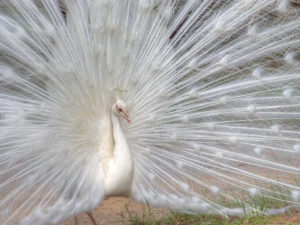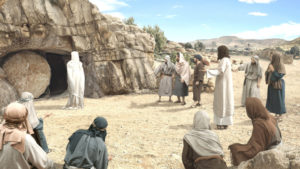Imagine there’s no heaven. It’s easy if you try.
No hell below us. Above us, only sky.
Imagine all the people Livin’ for today.
Imagine there’s no countries. It isn’t hard to do.
Nothing to kill or die for. And no religion, too.
Imagine all the people, Livin’ life in peace.
You may say I’m a dreamer, But I’m not the only one.
I hope someday you’ll join us, And the world will be as one.
– John Winston Lennon (1940-1980), from “Imagine” (1971)
 It amazes me to say that Jesus easily could have sat down at the piano and written “Imagine” with our dear Brother John. Well, except for the “Imagine there’s no heaven” part, although Jesus wouldn’t call where He is living now “heaven.” He would call it simply reality. Just a few days ago I was in shock about what Jesus was saying, and with no idea of what He might say next. Here is a Man who has accepted the torture and murder by Roman Christianity of millions upon millions of people in His name over seventeen hundred earth-years. And I was used to that Jesus. How clueless I was! I assumed that He simply loves people. So He welcomed, and He patiently healed all those victims, and in the process He Himself became ever more personally powerful, as would happen to anyone Who is living such constant, intense and perfect love in a reality governed by Consciousness. Then all in a moment, He didn’t just turn over all the money changers’ tables in the Temple (MT 21:12). Oh no. One day He decided to turn over and smash the entire Temple altogether. And He did it joyously!
It amazes me to say that Jesus easily could have sat down at the piano and written “Imagine” with our dear Brother John. Well, except for the “Imagine there’s no heaven” part, although Jesus wouldn’t call where He is living now “heaven.” He would call it simply reality. Just a few days ago I was in shock about what Jesus was saying, and with no idea of what He might say next. Here is a Man who has accepted the torture and murder by Roman Christianity of millions upon millions of people in His name over seventeen hundred earth-years. And I was used to that Jesus. How clueless I was! I assumed that He simply loves people. So He welcomed, and He patiently healed all those victims, and in the process He Himself became ever more personally powerful, as would happen to anyone Who is living such constant, intense and perfect love in a reality governed by Consciousness. Then all in a moment, He didn’t just turn over all the money changers’ tables in the Temple (MT 21:12). Oh no. One day He decided to turn over and smash the entire Temple altogether. And He did it joyously!
And Jesus did all of this just as we were in the process of finishing a book and preparing a website to showcase His teachings, and all at His request. But this is not personal. Actually, I wrote that book three years ago, and it was good of my Thomas to refuse to let me publish it back then, since He knew that Jesus was about to make it obsolete. Now I can revise it and make it accurate. And I will do that, because this does make sense. It is alarming, but also exciting, and beyond anything that I ever could have expected from our Friend; but it is consistent with the four canonical Gospels. And after a couple of nightly meetings that Thomas has not allowed me to remember, but that Jesus has pushed through the essence of anyway, I get it. I do. Traditional religions – and especially all the forty-two-thousand versions of Roman Christianity – all make our spiritual growth more difficult, or they even make it impossible. So we will abandon them now, and we will follow Jesus.
 The revelation that has shaken me a bit at first is that the new Christianity of Jesus must be unstructured. It can have no leaders and no rules at all. It must be based only on the four canonical Gospels, after all the parts that later were added by Nicaea have been cut away. It is a movement and not a religion; it is a set of teachings meant to transform each of us internally. And I can see now how that might possibly work. Without the distractions of churchy political nonsense to bother and befuddle our days, perhaps for the first time in two thousand years, people with even just a passing interest in Jesus might read and begin to put into practice what He taught.
The revelation that has shaken me a bit at first is that the new Christianity of Jesus must be unstructured. It can have no leaders and no rules at all. It must be based only on the four canonical Gospels, after all the parts that later were added by Nicaea have been cut away. It is a movement and not a religion; it is a set of teachings meant to transform each of us internally. And I can see now how that might possibly work. Without the distractions of churchy political nonsense to bother and befuddle our days, perhaps for the first time in two thousand years, people with even just a passing interest in Jesus might read and begin to put into practice what He taught.
The notion of building an entire movement around the four canonical Gospels will seem nonsensical to many theologians. Those Gospels were chosen, only four out of many, by the Council of Nicaea in 325, and choosing those four now leaves out some things that Jesus reportedly said. Ignoring the letters of Paul leaves out some ideas developed by the early church. There is just one reason why building an entire movement around those four Gospels makes sense. And that reason is that Jesus wants us to do it. He believes that people coming out of Roman Christianity will feel safest and most comfortable at first with just the canonical Gospels. And Jesus adds that if those who have been lifelong Roman Christians never venture beyond the canonical Gospels, they will still have enough of what He taught to achieve the kingdom of God on earth. Therefore, what they have will be sufficient. And if they want more, then they also will have the other Gospels in publication and close at hand! But to do what the Roman Christians have done, and to distort the Lord’s message with admixtures from the Old Testament and from Paul all muddling through the sacred words of Jesus as if they carried equal weight is pure foolishness and plain sacriledge.
Jesus carefully designed His teachings as a prescription for rapid spiritual growth. He undertook that earth-lifetime as Jesus two thousand years ago specifically to study people in order to figure out how to help us to achieve the most rapid spiritual growth, and He tells that story in an Appendix to The Fun of Loving Jesus. Most importantly, His teachings really do work well! They work amazingly well, but they have hardly been tried because Roman Christianity soon intervened and added its fear-based ideas and dogmas, and thereafter hardly anyone has taken the Gospel words of Jesus seriously. I write this, and then I read it, and I am freshly horrified. We have revered the Man, while never once in two millennia caring at all what Jesus actually said?
 But if the Lord’s teachings are indeed the most ideal method for achieving rapid spiritual growth, why then did He not introduce them to us sooner and insist that we take them seriously? Of course, He has an answer for that question that shames Roman Christianity to its core. During all of the past seventeen earth-centuries, Jesus has sadly had a greater priority. In an astral reality without time, Jesus has spent the past seventeen hundred earth-years in healing the hundreds of millions of victims of Roman Christianity. First there were the pogroms against the millions of Jesus’s first followers, who were murdered as Roman Christianity was being established. Then there were the Crusades and the Inquisitions, all the ways in which many millions of people over the centuries were murdered in the name of Jesus. (And my dear friends, if you never have read Helen Ellerbe’s book, then please, for the sake of all the people that Roman Christianity has martyred, try to find the time to read it now!) And then, of course, in the twentieth century came the Holocaust, and the torture and murder of almost six million Jews and another five million others, simply for their ethnicity. And the murderers of all these people were, as we know, Roman Christian Nazis. So let’s just say that Jesus hasn’t had the time to do anything about Roman Christianity until now, because for most of the past two thousand years He has been otherwise occupied.
But if the Lord’s teachings are indeed the most ideal method for achieving rapid spiritual growth, why then did He not introduce them to us sooner and insist that we take them seriously? Of course, He has an answer for that question that shames Roman Christianity to its core. During all of the past seventeen earth-centuries, Jesus has sadly had a greater priority. In an astral reality without time, Jesus has spent the past seventeen hundred earth-years in healing the hundreds of millions of victims of Roman Christianity. First there were the pogroms against the millions of Jesus’s first followers, who were murdered as Roman Christianity was being established. Then there were the Crusades and the Inquisitions, all the ways in which many millions of people over the centuries were murdered in the name of Jesus. (And my dear friends, if you never have read Helen Ellerbe’s book, then please, for the sake of all the people that Roman Christianity has martyred, try to find the time to read it now!) And then, of course, in the twentieth century came the Holocaust, and the torture and murder of almost six million Jews and another five million others, simply for their ethnicity. And the murderers of all these people were, as we know, Roman Christian Nazis. So let’s just say that Jesus hasn’t had the time to do anything about Roman Christianity until now, because for most of the past two thousand years He has been otherwise occupied.
So now at last Jesus is witnessing the slow death of the Roman Christian usurper of His name and His rightful place. Now we might say that He can choose to take over Christianity and the use of His own name at whatever point in the history of what should have been His movement He might like, and carry it forward from there. And as I think about it, He seems to have been considering how best to do exactly that, during the months of earth-time that I have been observing Him since I channeled Liberating Jesus for Him in early 2015. We who are living on earth assume that upper-level discarnates know everything that we know about human life. But in fact, they seem to be entirely disengaged from it. And even our spirit guides are connected to what is currently happening on earth only through us, so I am amazed to tell you that a lot of Jesus’s exploration of current conditions on the earth plane seems to have been happening through my Thomas, the being that He still refers to as His brother even six thousand years after they actually last were brothers in the flesh. And of course, my Thomas in turn is connected to the earth through me. So the three of us are basically Texans. But I realize in retrospect that Jesus has been trying to find a way to introduce His teachings without disrupting the two billion Christians that He so much loves, only to see that there really is no way to remove the fear from Christianity. Fear is baked in the cake. And since fear is the opposite of love, what you fear you cannot love, so to follow any religion at all makes spiritual advancement close to impossible.
 Once Jesus had worked out all of that, it didn’t take Him long to decide that His only option was to erase Roman Christianity from His personal vision altogether, and to allow the religion to quietly die on its own. And of course, for someone who has lived as Jesus has lived for so many centuries, feeding astral fish in an astral river and communing with those astral deer while He patiently loved all those millions of victims of Christianity back into spiritual health, for Him to go right back to teaching in Galilee makes sense. So that is what His website will be: a recreation of His canonical Gospel teachings, together with instructions about how to use those teachings to achieve the kingdom of God on earth in the way that He told us that it will unfold, not out there but rather in our innermost hearts. For as Jesus told one of the Pharisees, “The kingdom of God is not coming with signs that can be observed; nor will they say, ‘Look, here it is!’ or, ‘There it is!’ For behold, the kingdom of God is within you” (LK 17:20-21). It is the very same spiritual elevation that you came to earth to achieve. And once you steep yourself in the teachings of Jesus alone, and in the right order, and you simply trust Jesus – keeping your hand always in His – then I don’t care if you are eighty years old when you begin to take the Lord’s teachings seriously, you can make this your last earth-lifetime. That is how amazingly transformative these teachings really are.
Once Jesus had worked out all of that, it didn’t take Him long to decide that His only option was to erase Roman Christianity from His personal vision altogether, and to allow the religion to quietly die on its own. And of course, for someone who has lived as Jesus has lived for so many centuries, feeding astral fish in an astral river and communing with those astral deer while He patiently loved all those millions of victims of Christianity back into spiritual health, for Him to go right back to teaching in Galilee makes sense. So that is what His website will be: a recreation of His canonical Gospel teachings, together with instructions about how to use those teachings to achieve the kingdom of God on earth in the way that He told us that it will unfold, not out there but rather in our innermost hearts. For as Jesus told one of the Pharisees, “The kingdom of God is not coming with signs that can be observed; nor will they say, ‘Look, here it is!’ or, ‘There it is!’ For behold, the kingdom of God is within you” (LK 17:20-21). It is the very same spiritual elevation that you came to earth to achieve. And once you steep yourself in the teachings of Jesus alone, and in the right order, and you simply trust Jesus – keeping your hand always in His – then I don’t care if you are eighty years old when you begin to take the Lord’s teachings seriously, you can make this your last earth-lifetime. That is how amazingly transformative these teachings really are.
Oh my dear ones, this is so simple! And it has always been simple. The religion has only ever been in the way. When each Christian stops fearing God as a deity so lacking in love that God could actually require the blood-sacrifice to Himself of God’s own Son, and when each Christian instead realizes and truly knows in his or her deepest heart that God loves you, purely and completely, as God’s own favorite and best-beloved child, then the kingdom of God can take root in your heart. The pure Christianity that Jesus taught is entirely devoid of fear, as Jesus first told us in some of the most beautiful and comforting words ever spoken. Jesus said:
 “And which of you by worrying can add a single day to his life’s span? Therefore, if you cannot do even such a very little thing, why do you worry about the other things? Consider the lilies, how they grow: they neither labor nor spin; but I tell you, not even Solomon in all his glory clothed himself like one of these. Now if God so clothes the grass in the field, which is alive today and tomorrow is thrown into the furnace, how much more will He clothe you? You of little faith! And do not seek what you are to eat and what you are to drink, and do not keep worrying! For all these things are what the nations of the world eagerly seek; and your Father knows that you need these things. But seek His kingdom, and these things will be provided to you. Do not be afraid, little flock, because your Father has chosen to give you the kingdom!” (LK 12:25-32).
“And which of you by worrying can add a single day to his life’s span? Therefore, if you cannot do even such a very little thing, why do you worry about the other things? Consider the lilies, how they grow: they neither labor nor spin; but I tell you, not even Solomon in all his glory clothed himself like one of these. Now if God so clothes the grass in the field, which is alive today and tomorrow is thrown into the furnace, how much more will He clothe you? You of little faith! And do not seek what you are to eat and what you are to drink, and do not keep worrying! For all these things are what the nations of the world eagerly seek; and your Father knows that you need these things. But seek His kingdom, and these things will be provided to you. Do not be afraid, little flock, because your Father has chosen to give you the kingdom!” (LK 12:25-32).
Imagine no possessions. I wonder if you can.
No need for greed or hunger. A brotherhood of man.
Imagine all the people, Sharing all the world.
You may say I’m a dreamer, But I’m not the only one.
I hope someday you’ll join us, And the world will live as one.
– John Winston Lennon (1940-1980), from “Imagine” (1971)






















































